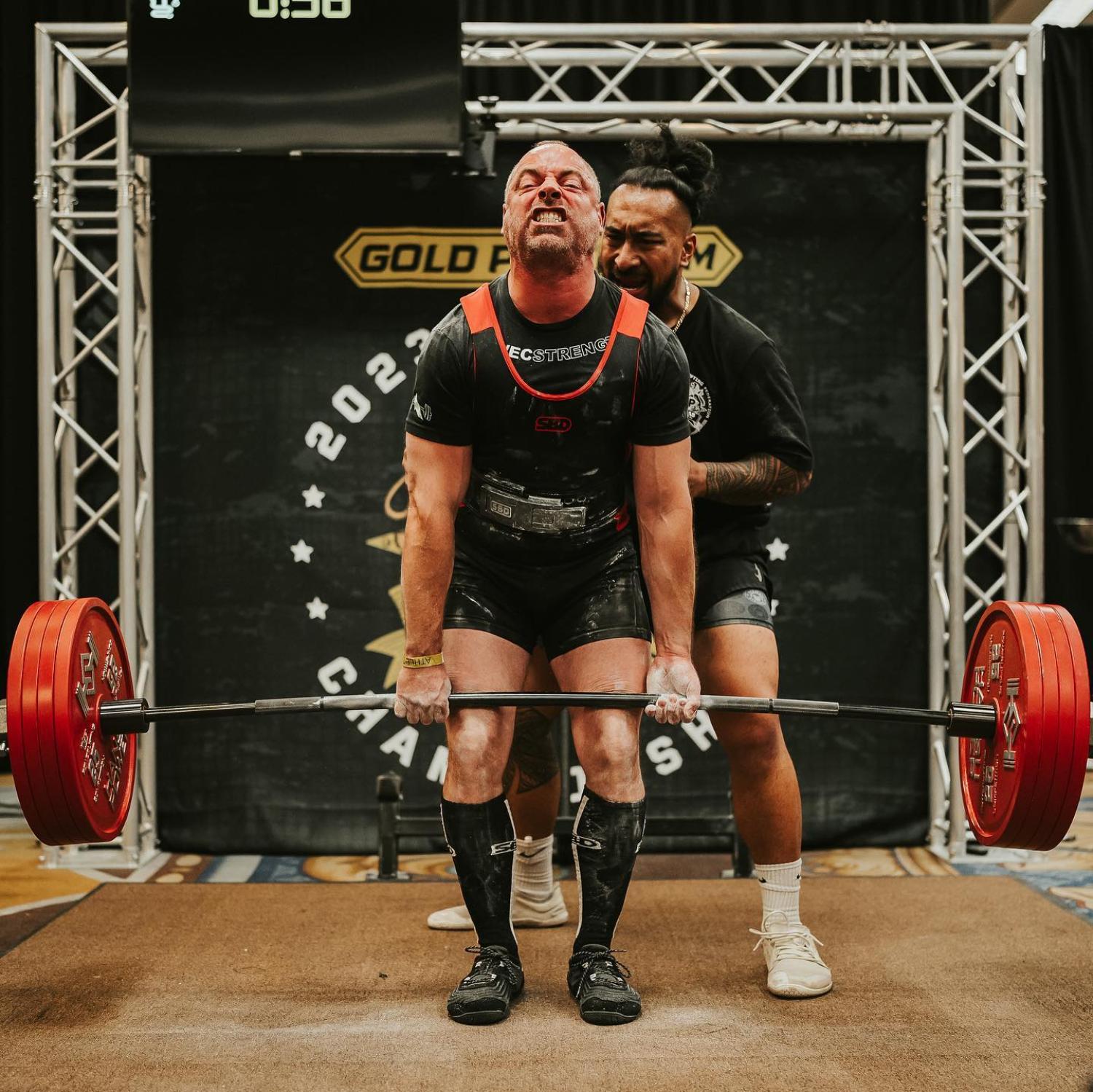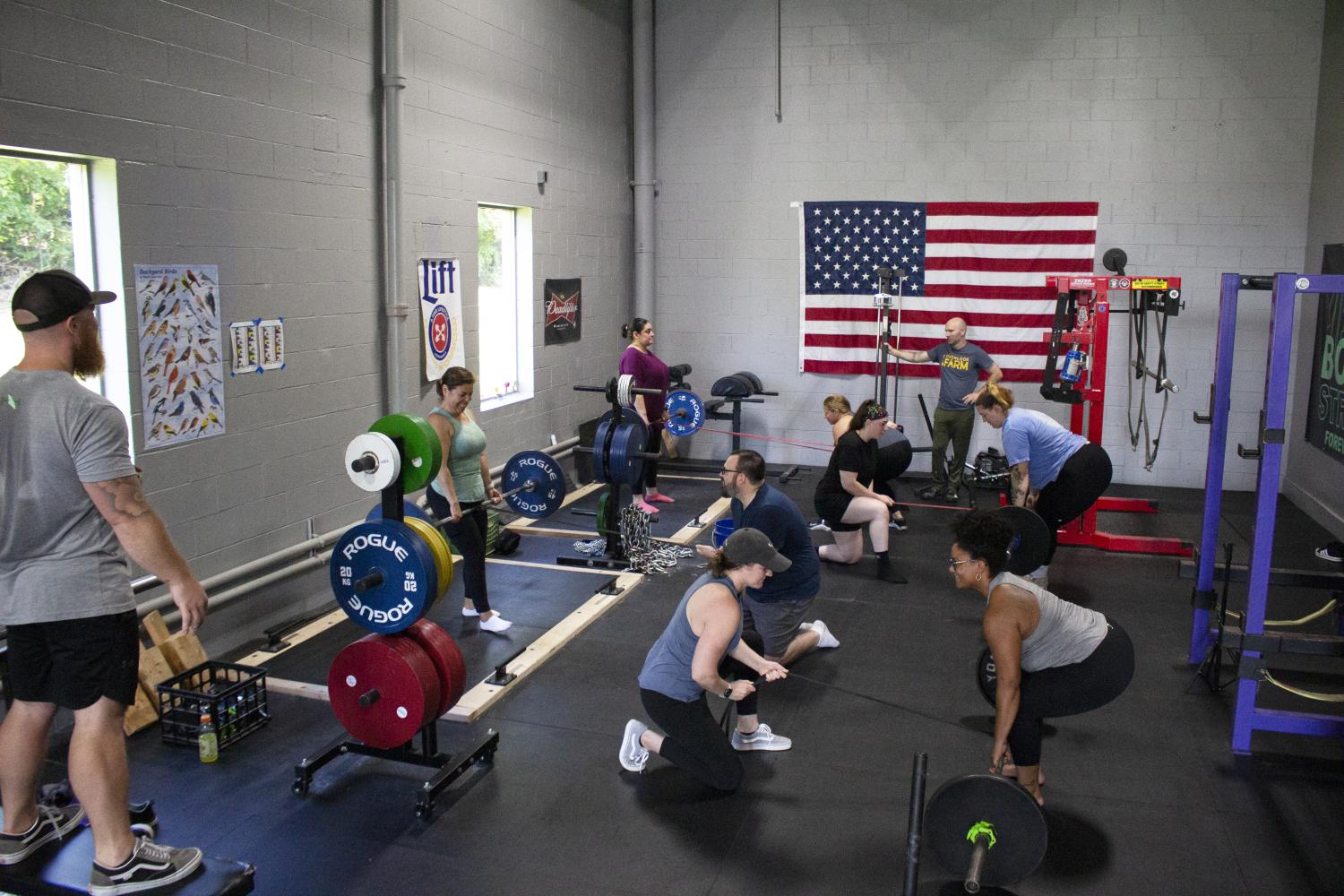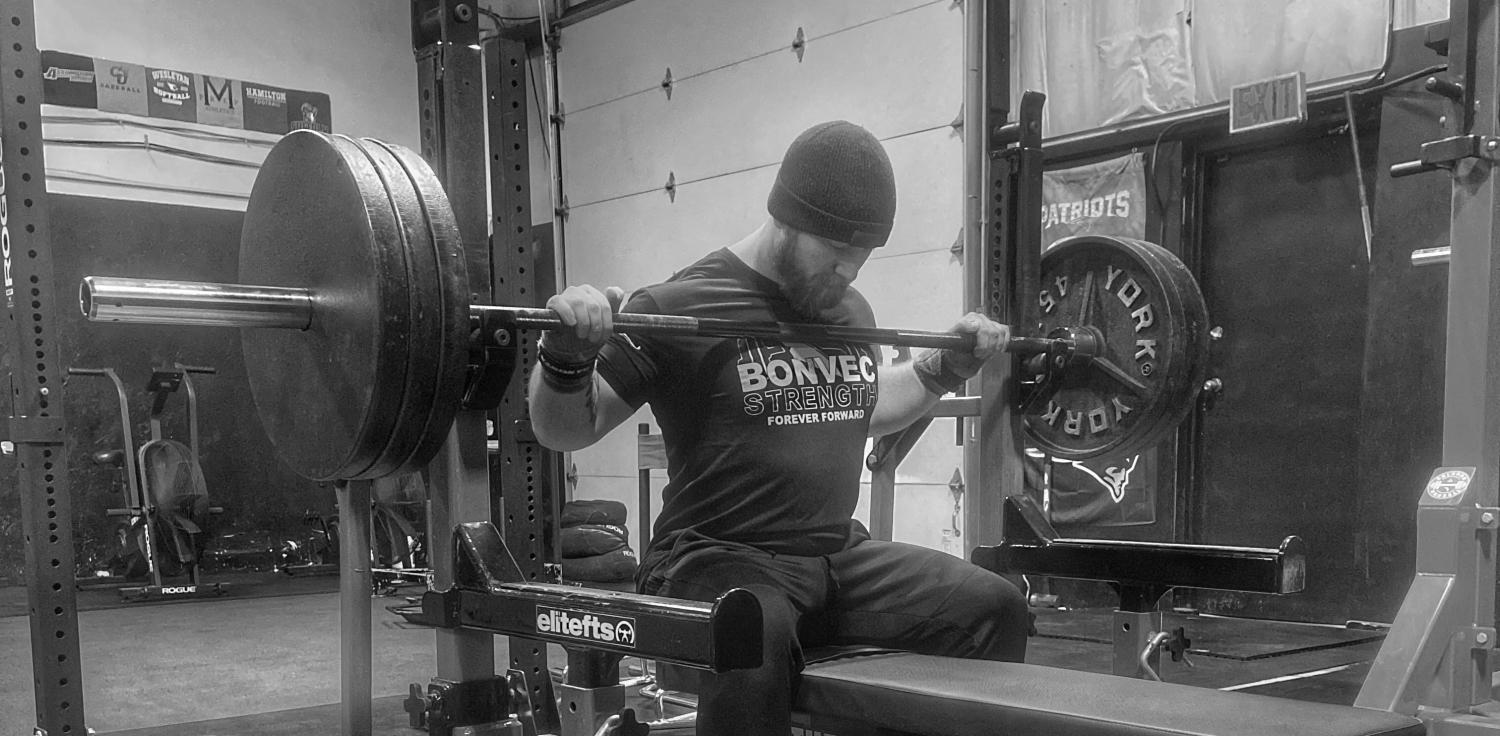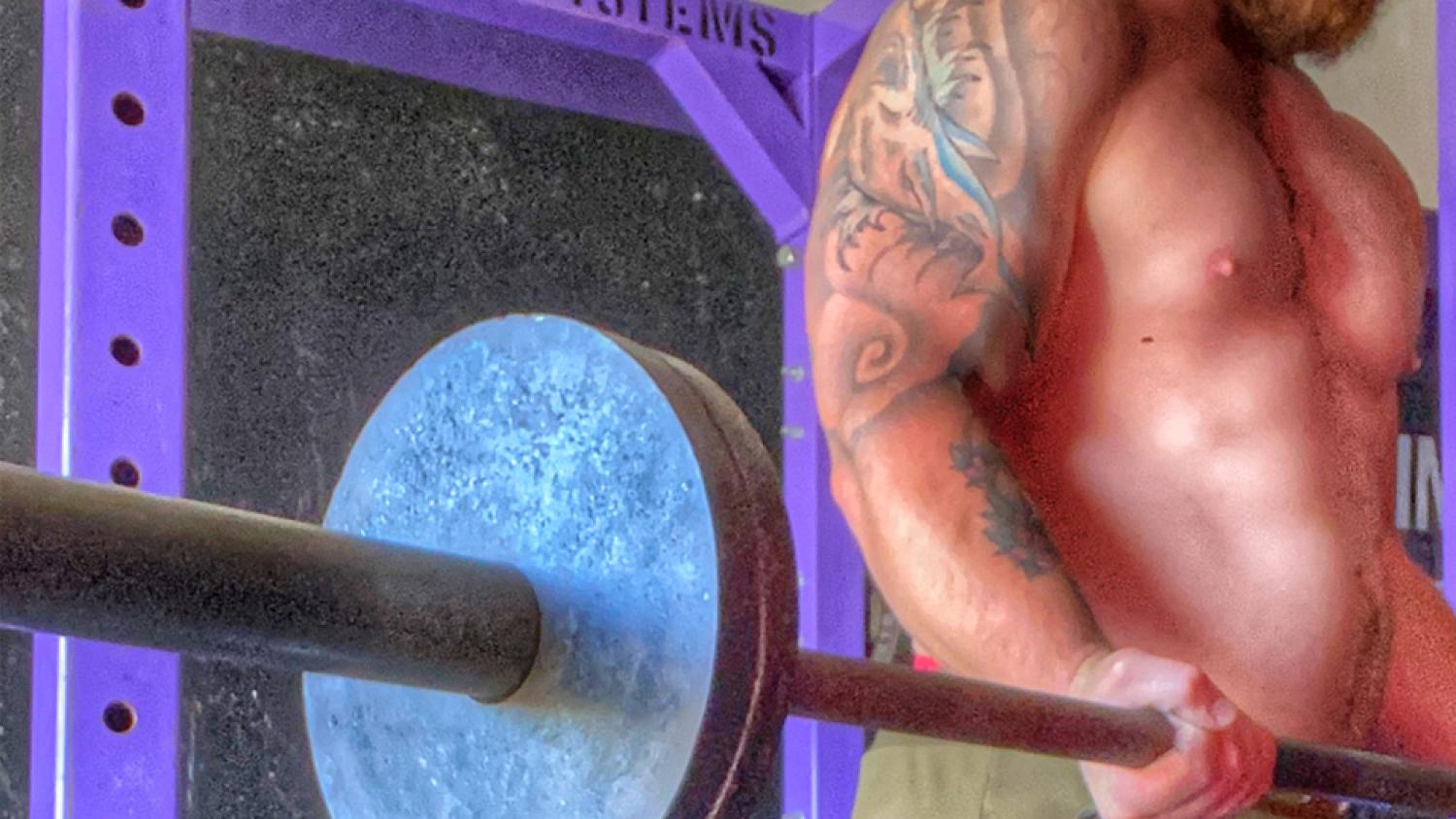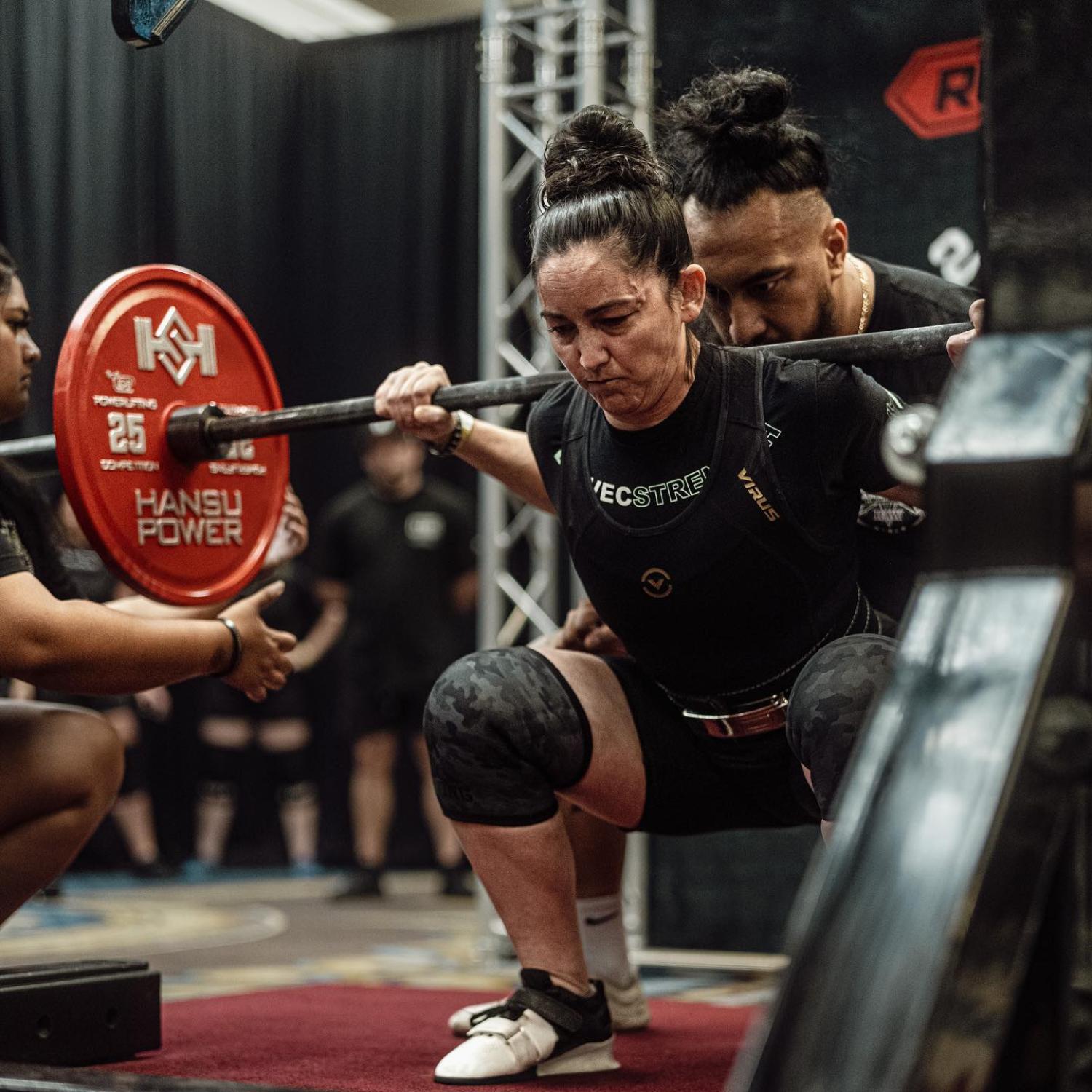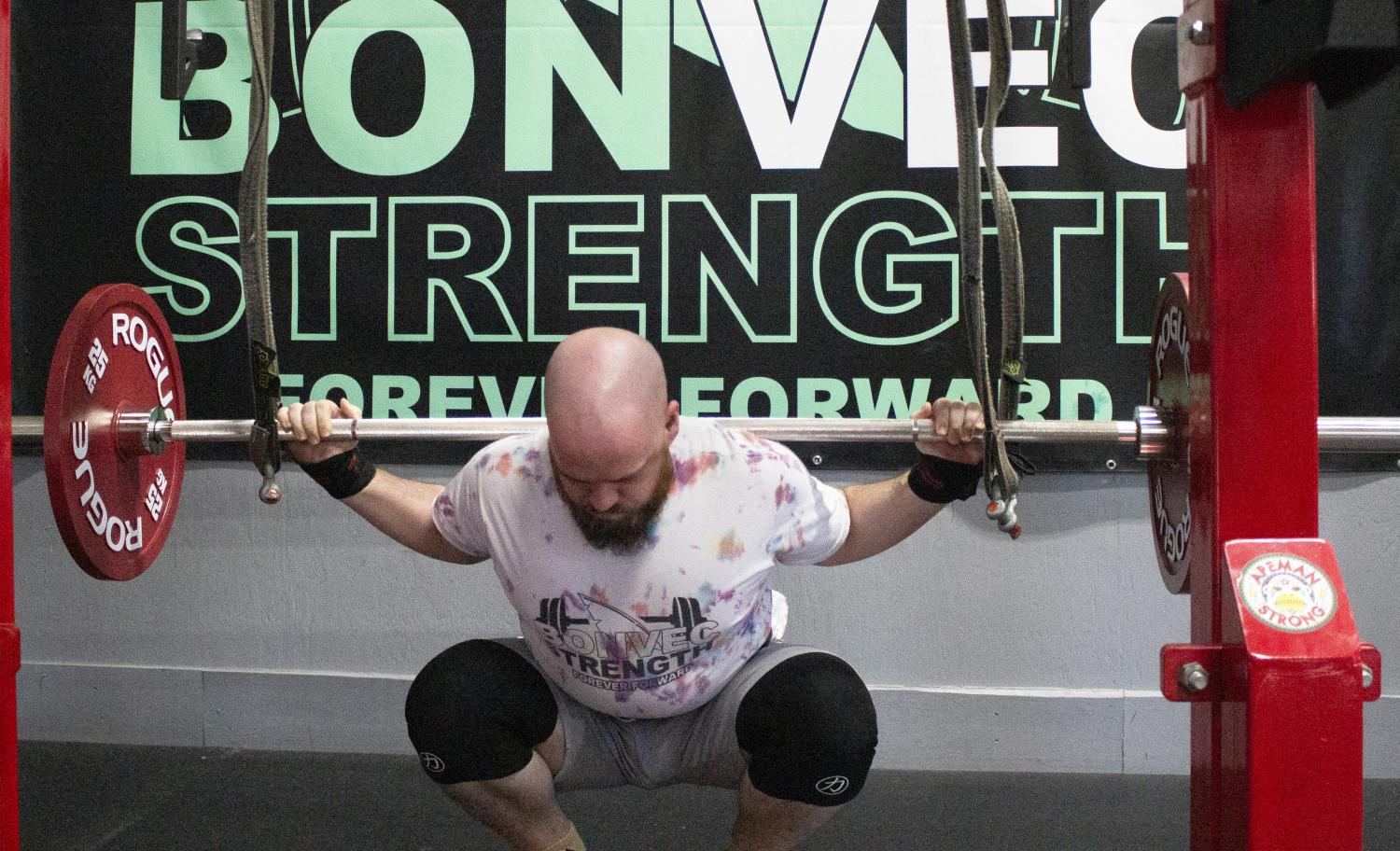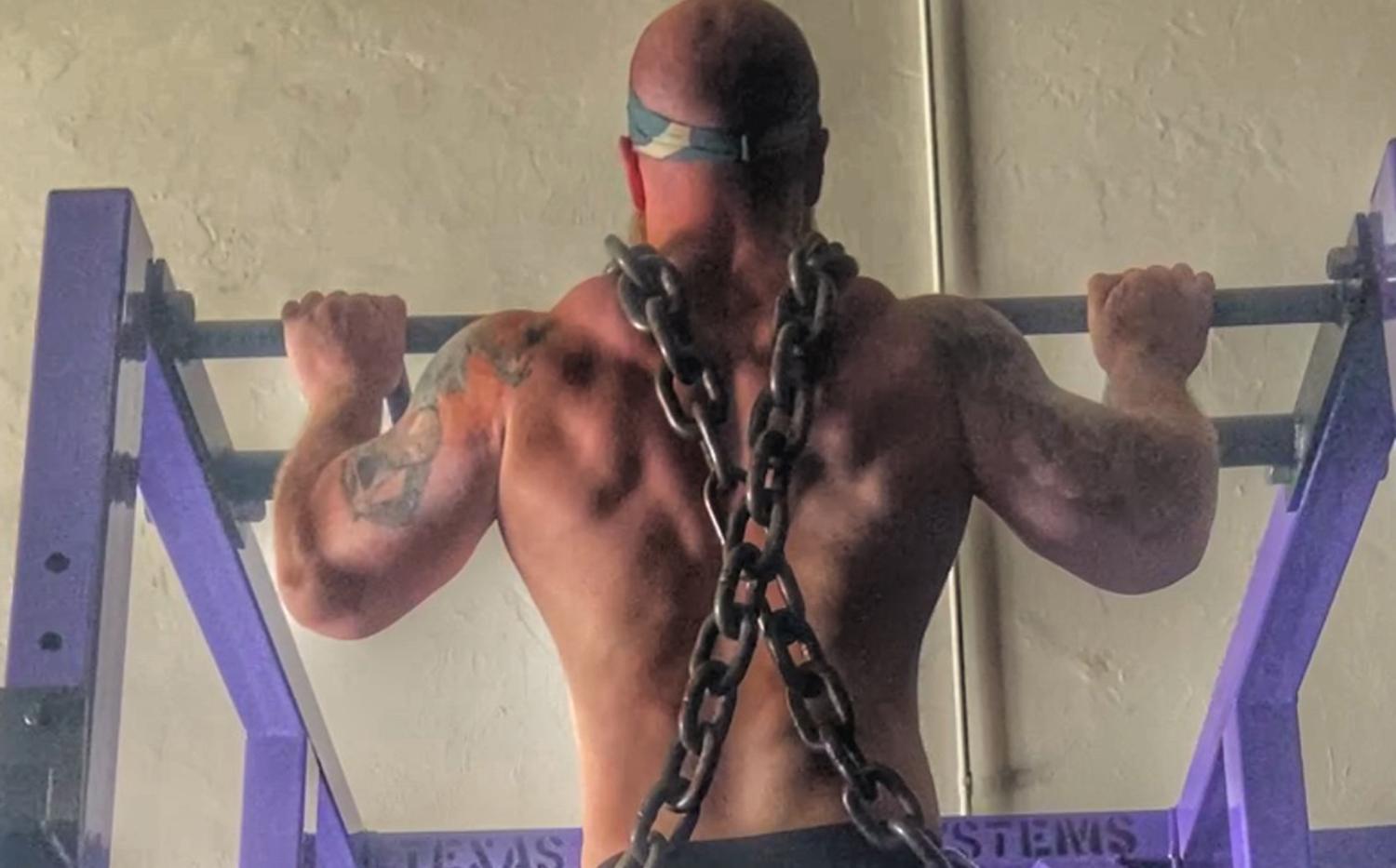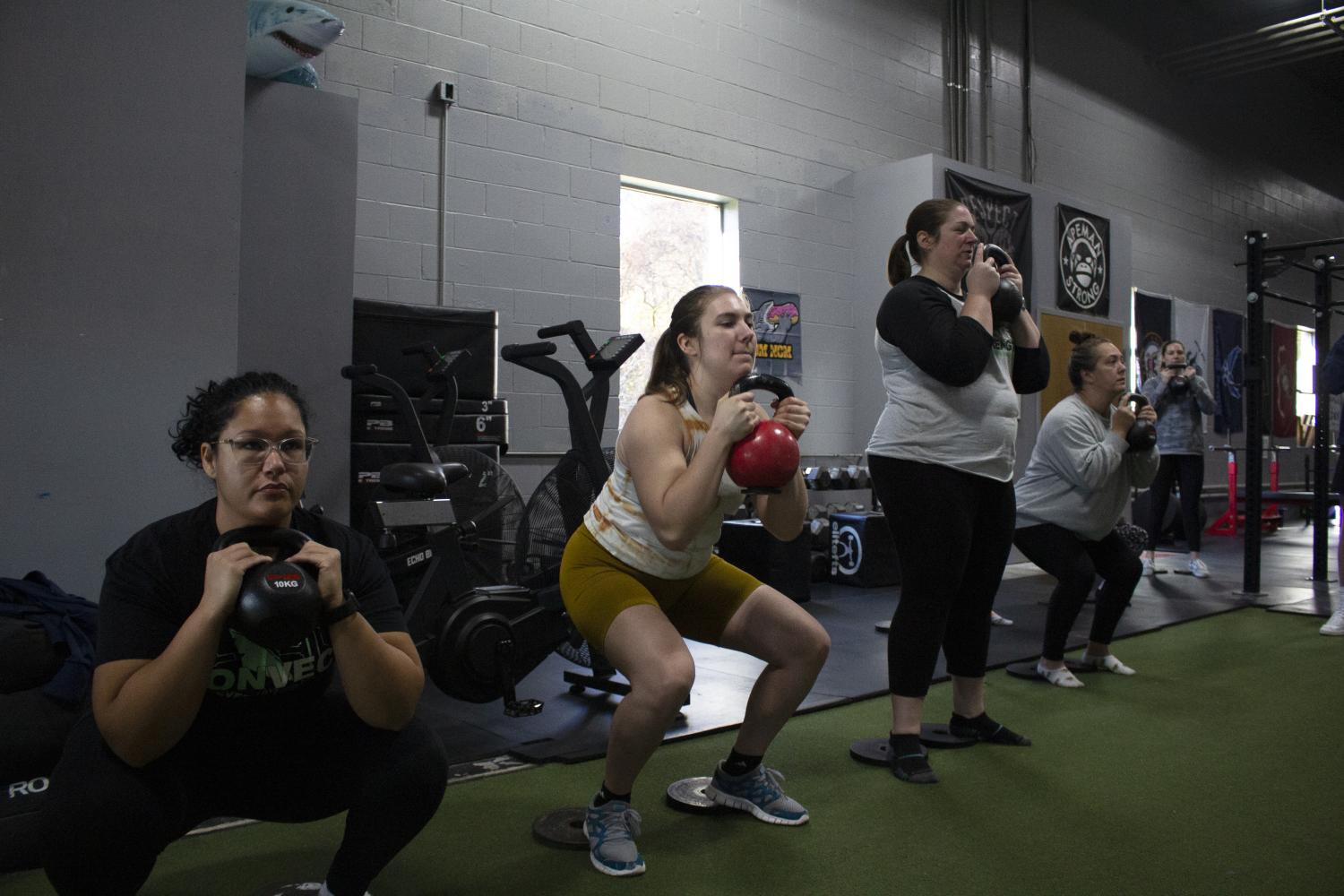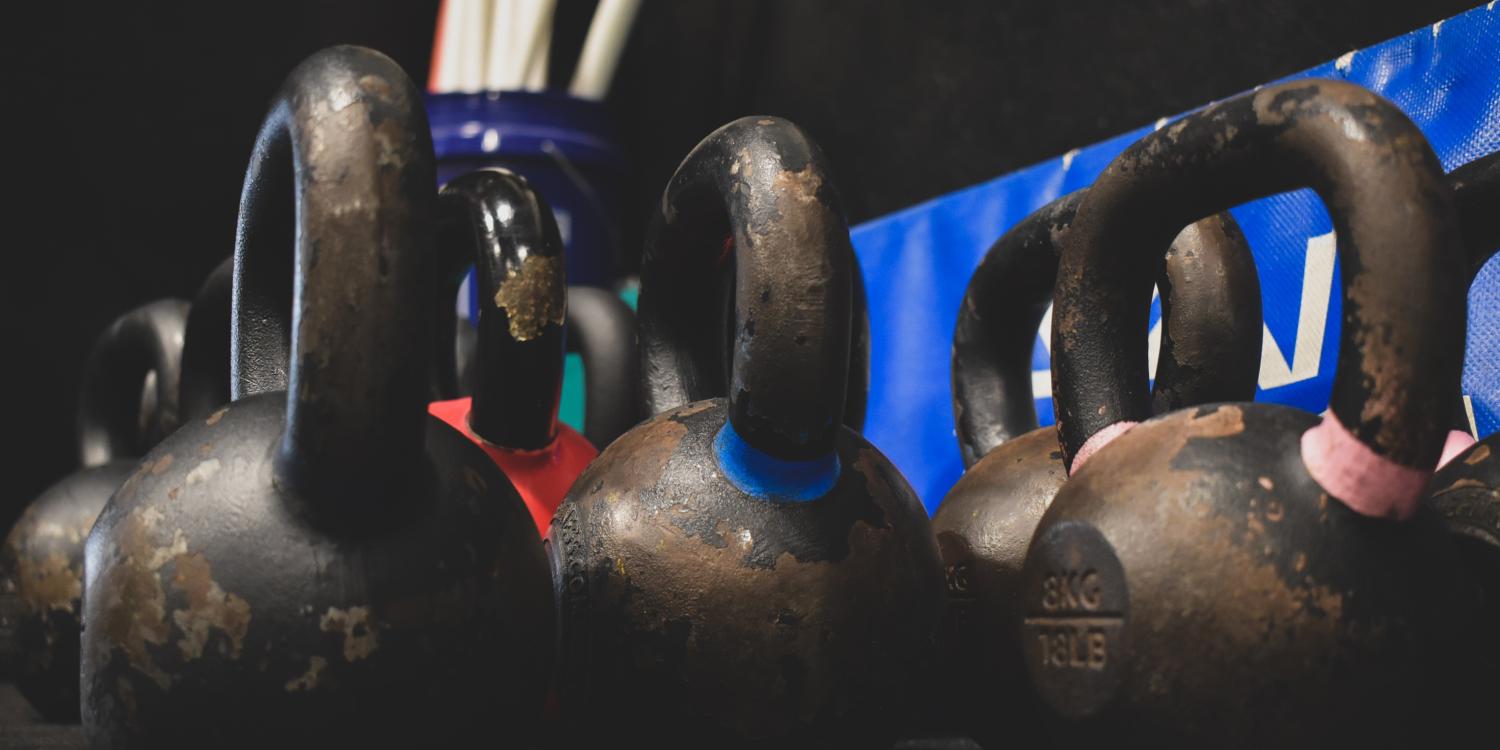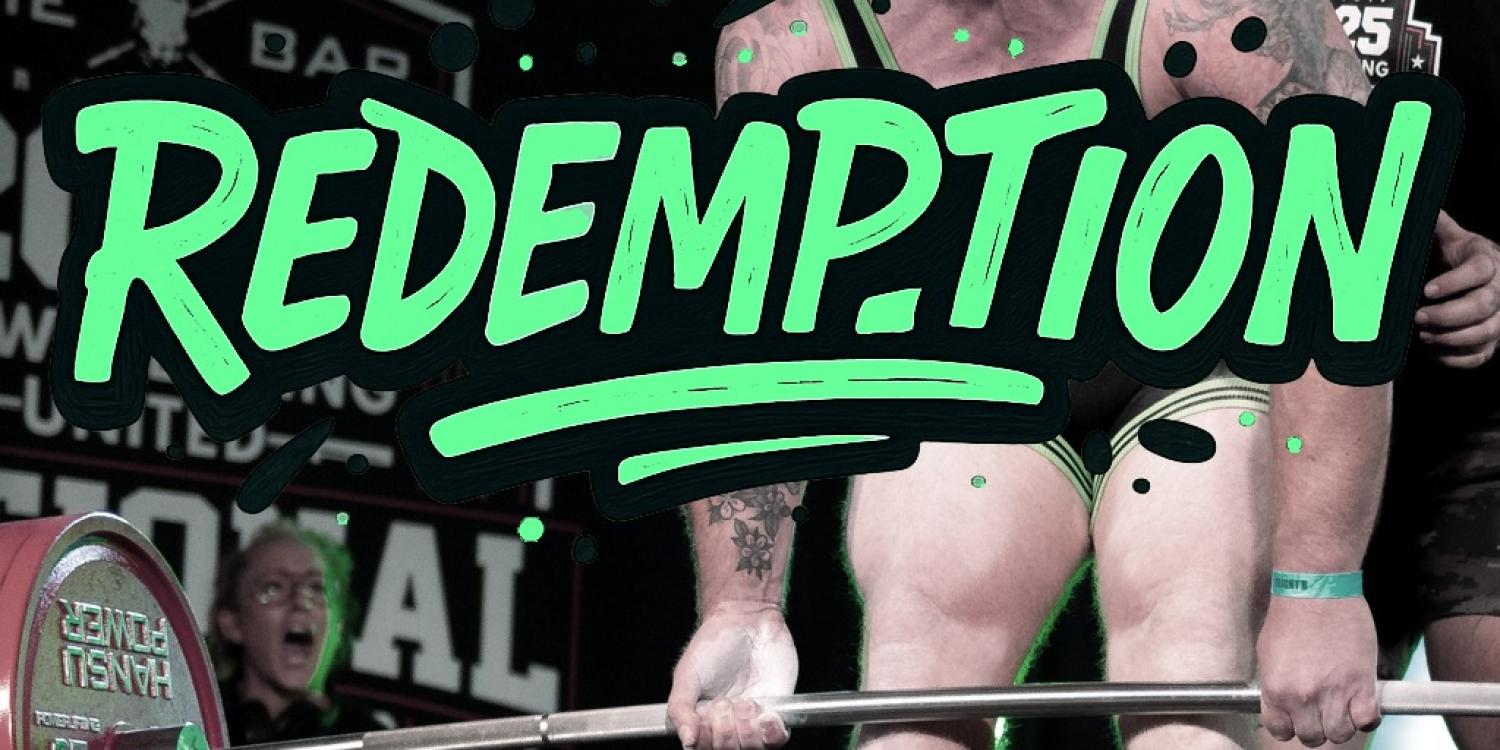
Peaking for Powerlifting
Bonvec Strength
PowerliftingFew feelings can compare to the excitement and anticipation leading up to a heavy 1-rep max attempt on the squat, bench press or deadlift. If you've been lifting for any period of time, especially if you compete in powerlifting, you understand the adrenaline rush of putting it all on the line after months of hard training, all for one single rep.
Your success - or lack thereof - in this moment all comes down to your preparation. Did you put in the work to reap the rewards of a new personal record? And did you follow a plan that puts you in position to perform at your best when it means the most?
Peaking for Powerlifting is a culmination of over a decade of working with powerlifters to make sure they're ready to dominate on meet day. This program is based on tried-and-true principles that we've come to lean on when lifters trust us to guide them to new PRs on the platform.
Whether you're a powerlifter aiming to break world records on the international stage or simply trying to set a new PR in the gym, Peaking for Powerlifting can help you display your maximal strength when it matters the most.



Technique is a Choice
A
Technique is a Choice
Technique is a Choice If you're reading this program, chances are you already know a thing or two about how to squat, bench press and deadlift. However, you're never too strong or too experienced to work on improving your technique. At Bonvec Strength, we like to say that technique is a choice. It's completely in your power to give 100 percent of your attention and focus to your technique when you're under the bar. It's completely in your power to choose the weight on the bar based on your technical max (i.e., the weight you can lift with optimal technique), NOT simply as heavy as you can go even if your technique falls to pieces. And it's completely in your power to be a student of the iron, continually striving to learn and improve your technique. This section includes three in-depth tutorials on the squat, bench press and Romanian deadlift. Watch the videos before diving into this program so you have a clear idea of how best to perform the big lifts as safely and effectively as possible.
How to Squat
B
How to Squat
How to Squat
How to Bench Press
C
Bonvec Strength: How to Bench Press
How to Bench Press
How to Conventional Deadlift
D
Bonvec Strength: How to Conventional Deadlift
How to Conventional Deadlift
How to Sumo Deadlift
E
Bonvec Strength: How to Sumo Deadlift
How to Sumo Deadlift
Important Concepts
F
Bonvec Strength: Important Concepts
Rate of Perceived Exertion (RPE) You will select your weights for your main lifts using Rate of Perceived Exertion (RPE). This is a subjective method of load selection that rates the difficulty of a set on a scale of 1-10, with 1 being easiest and 10 being a maximal effort. RPE-based training utilizes autoregulation, meaning that you adjust the weight on the bar based on how you’re feeling on a given day. If you’re feeling great, push for heavier weights. If you’re feeling lousy, go lighter. This gives the lifter more options than percentage-based training or simply adding weight every week, and leads to more productive training sessions overall. It takes time to learn to judge your own RPE, so you may not get it perfect at first. Most importantly, start too light. If you go too heavy right out of the gate, it will be difficult to keep adding weight to the bar over the course of 12 weeks as you approach your competition or testing day. There are two main ways to judge RPE: using “reps in the tank” or “how heavy did that feel?” The former is more objective, but doesn’t work as well for heavy, low-rep sets. The latter is more subjective, but works better for more experienced lifters and for heavy, low-rep sets. For example: Reps in the Tank 10 RPE - 0 reps left in the tank (could not have done another rep and/or any more weight despite a maximal effort) 9.5 RPE - MAYBE 1 rep left in the tank 9 RPE - Definitely 1 rep left in the tank 8.5 RPE - MAYBE 2 reps left in the tank 8 RPE - Definitely 2 reps left in the tank 7.5 RPE - MAYBE 3 reps left in the tank 7 RPE - 3 reps left in the tank ...and so on. How Heavy Did that Feel? 10 RPE - Maximal effort, as heavy as possible for the given rep range. 9 RPE - Really heavy, but possibly could have gone a bit heavier. Had to grind to finish the rep. 8 RPE - Heavy, but still plenty of strength left. Didn’t have to grind to finish the rep. Similar to an opening attempt in competition. 7 RPE - Moderate difficulty. Bar still moved fast and smooth. 6 RPE - Light, not difficult. Probably not heavy enough to make you stronger. ...and so on. Reps In Reserve (RIR) The preferred method for choosing the load and/or reps per set for your accessory and “bodybuilding” movements is to use the Reps In Reserve (RIR) method. Rather than performing a predetermined number of reps per set, you will select a weight that you believe will result in you completing the set in a certain rep range, and then perform as many reps as possible, stopping a certain number of reps shy of failure (i.e., leaving reps in reserve). This may sound similar to RPE, and it is. However, for accessory movements where the purpose is to build muscle rather than increase strength, the proximity to failure - or reps in reserve - is more important than the actual number of reps performed. For example, say you were going to do triceps extensions and you wanted to do 10-12 reps (a common hypertrophy rep range). You realize midset that the weight is somewhat easy, but stop at 12 reps with about 5 reps in reserve. Was this set productive? Probably not. Arbitrarily stopping at 12 reps leaves you too far from failure to force the body to adapt and build muscle. Rather than stopping at 12, say you intended to perform the set to 2 RIR, so you continued to do reps until you got to 15, which was difficult but felt like you have done 2 more reps if you absolutely had to. Although you did more reps than the target rep range (10-12), you stayed true to the 2 RIR assignment and finished the set close enough to failure to likely trigger a hypertrophy response.
How to Use This Program
G
How to Use This Program (Peaking)
How to Use This Program Peaking for Powerlifting was designed to display your maximal strength when it matters the most: on competition day. With so much riding on one day, make sure you read this section thoroughly to produce the greatest possible results. STEP 1 – Make sure that you are healthy enough to exercise. If you’re injured, unfortunately this program isn’t for you. Your doctor or physical therapist can tell you if you’re ready. STEP 2 – Read the whole program. It’s important to read everything so you know what you’re doing once you hit the gym floor. STEP 3 – Commit to training 4 days per week for at least 90 minutes, if not longer. STEP 4 – Pick your accessory exercises from the Exercise Database and watch the exercise demonstration videos. Every single exercise in this program has an instructional video where we walk you step-by-step through proper technique to ensure safety and maximum results. STEP 5 – Start Week 1 and do your first training session. Get under the bar and get it done! STEP 6 – Write down the weights, sets and reps of every exercise on the workout sheets provided. This will help you track your progress and ensure that you’re appropriately challenging yourself each workout. STEP 7 – Go home, eat some good food and get some rest. Quality nutrition and sleep are your 2 strongest weapons in your fight for maximal strength. STEP 8 - Repeat steps 5 through 7 until you’ve completed the 12-week program. STEP 9 – COMPETE. Whether it's on the platform at an official powerlifting meet, or simply a testing day in the gym, complete the program by maxing out your squat, bench press and deadlift. STEP 10 – Let us know how you did! We’re always happy to listen, help and celebrate your progress with you. Feel free to reach out to us on social media with questions, concerns or comments. Training Schedule There are four possible training schedules for Peaking for Powerlifting. The days are listed as if your training week starts on Monday, but this is only for example and your training week can start on any day as long as the training days and rest days are separated accordingly. Option 1 Monday: Day 1 Tuesday: Day 2 Wednesday: Off Thursday: Day 3 Friday: Day 4 Saturday: Off Sunday: Off Option 2 Monday: Day 1 Tuesday: Day 2 Wednesday: Off Thursday: Day 3 Friday: Off Saturday: Day 4 Sunday: Off Option 3 Monday: Day 1 Tuesday: Off Wednesday: Day 2 Thursday: Off Friday: Day 3 Saturday: Day 4 Sunday: Off Option 4 Monday: Day 1 Tuesday: Off Wednesday: Day 2 Thursday: Day 3 Friday: Off Saturday: Day 4 Sunday: Off If possible, don’t train more than two days in a row or take more than two days off in a row. This allows for optimal recovery between workouts but also encourages consistency.
A
Bench Press
1 x 3
B
Bench Press
5 x 3
C
Bench Press to Pins
2 x 3
D
Wide Grip Lat Pulldowns
E
1-Arm DB Row
F
DB Bicep Curls
A
Back Squat
1 x 3
B
Back Squat
5 x 3
C
Pause Back Squat
2 x 5
D
Seated Leg Curl
E
Reverse Crunch
A
Close Grip Bench Press
1 x 5
B
Bench Press
3 x 5
C
Cable Triceps Pushdowns w/ Rope
D
DB Lateral Raise
E
Rear Delt Flyes
A
Front Squat to Box
5 x 3
B
Deadlift
1 x 3
C
Deadlift
6 x 3
D
Seated Cable Row
E
Body Saw
 Tony Bonvechio
Tony Bonvechio
Elite-level powerlifter with over a decade of coaching experience. Master's degree in Exercise Science. Mediocre fisherman, craft beer enthusiast and world's biggest Metallica fan.


Step on the platform with confidence on meet day knowing you're put in the work and followed a tried-and-true plan. Sign up for Peaking for Powerlifting today!
Get Peaking for Powerlifting
 Will Crozier
Will Crozier
Set All Time Australian Records
Verified Athlete"- 1st Place at 2019 ProRaw X - 771.6 lb squat - 451.9 lb bench - 854.3 lb deadlift (Australian record) - 2077.8 lb total (Australian record)"
 Nadia Moumine
Nadia Moumine
USAPL Bench Press National Champion
Verified Athlete"– 2021 USAPL Raw Bench National Champion - 2024 USAPL Arnold Pro Series Bench Finals, 3rd Place – 490.5 lb squat – 314.1 lb bench press (Massachusetts State Record) – 429.9 lb deadlift"
 Dan Breton
Dan Breton
Multiple Master's National Records
Verified Athlete"- 2-time Master's 90kg National Champion (IPL and WRPF) - 462.9 lb squat (WRPF National Record) - 275.5 lb bench (WRPF National Record) - 540.1 lb deadlift (WRPF National Record) - 1267.6 lb total (WRPF National Record)"
 Tina Andersen
Tina Andersen
Multiple State Records in 56kg Open
Verified Athlete"- 2-time Drug-Tested Nationals Participant - 270.1 lb squat (MA record, WRPF) - 138.9 lb bench (MA record, WRPF) - 336.2 lb deadlift (MA record, WRPF) - 734.1 lb total (400 DOTS)"



